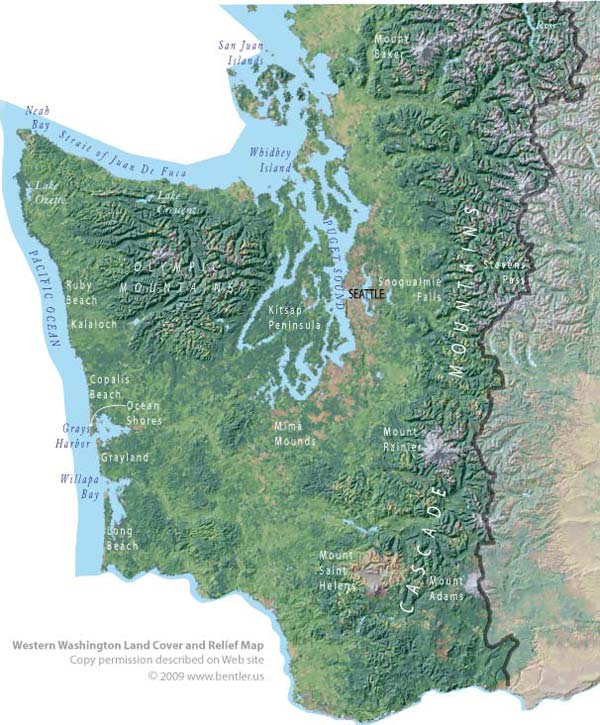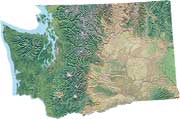Western Washington is the area west of the crest of the Cascade Mountain range draining to Puget Sound, the lower Columbia River, and the Pacific Ocean. The map of Western Washington shows the region's natural features including mountain ranges and Cascade volcanoes, islands and peninsulas, and major lakes, and also displays city areas, prairies, farms and great forests that cover the evergreen state.
The western Washington landscape has been squeezed and buckled by geologic forces that uplifted the Cascade and Olympic Mountains, built up great volcanoes in the Cascades and then blasted them apart.
The region has been covered by continental glaciers that gouged troughs, then receded, filling with seawater or fresh water lakes. Alpine glaciers continue to slowly grind down the highest mountains, washing away rock flour that flows into Puget Sound and the Pacific Ocean, laying down mud. The land has been slowly worn by the weathering of seasons and over the long expanse of time, covered with a thin layer of life that gives the region all its color.
The natural world of western Washington has changed by great human forces too, with native people having burned forests, creating open swaths of prairie to grow food. Recently people founded cities where ancient forests stood, cities now growing with huge suburbs and long business strips spreading along highways in all directions, with offices, industries, logging cuts and cultivated farmlands everywhere converting what is valuable in or on the land, to offer it for sale for the well-being of our busy people.
And providing for quality of life or its sustainability, perhaps out of respect for something precious, or greater than ourselves, are wilderness areas, national parks, state parks, county parks, wildlife areas, and natural lands, the last best places set aside to remain mostly free from being used, places filled with adventure, discovery and wonder, mostly in the high mountains but many bits and pieces in the rich western lowlands too.
See the Washington maps collection for detailed road maps, wildlife areas, and historical points of interest. Related links also provide information about Western Washington geology, maps and landscape photos.


